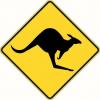Hi All
I have been wishing to switch hollow grinding my chisels and blades for some time now. Now that Lee Valley carries CBN wheels, they are readily accessible and I am ready to make the switch. I will be using the grinder primarily to reshape bevels (a lot of my vintage tools have been sharpened at way too steep a bevel), and remove nicks and chips from blades before sharpening on my water stones. I will be using a 1 hp slow speed grinder (1720 RPM). While I do some turning, I am mostly a regular woodworker, and will use the wheels accordingly. I use a mix of O1, A2 and PMV 11.
My options are 80 grit or 180 grit, flat wheels. Is the 80 too aggressive (leave scratches too deep that will take a while to hone out) or is the 180 too slow? I'm hoping those of you who use these wheels will be able to suggest the best one for my purposes. I've looked at past posts on CBN wheels, and while a lot of the merits and issues have been discussed, the relative utility of the different grits hasn't been touched on much.
Thanks!




 Reply With Quote
Reply With Quote






